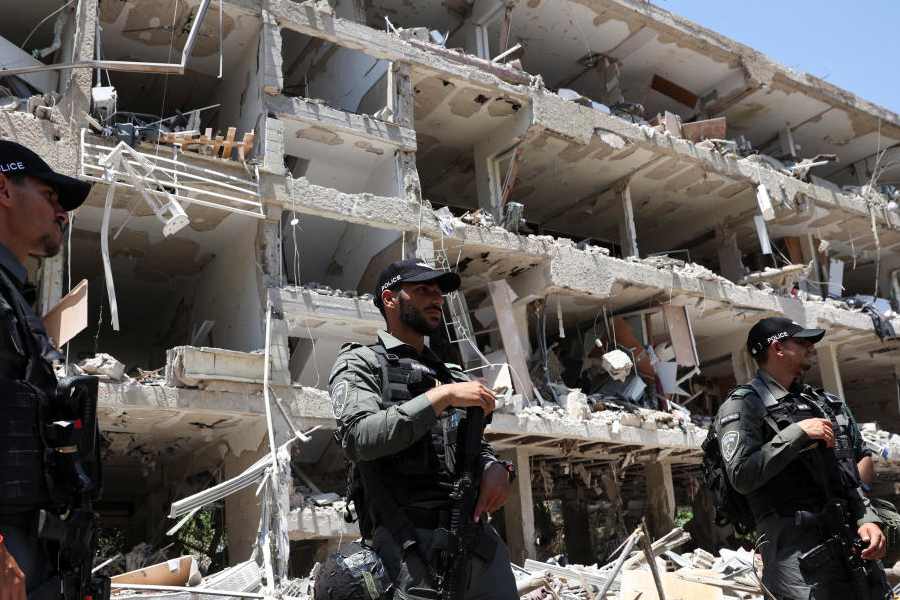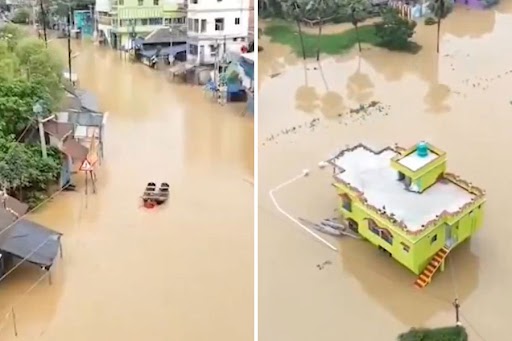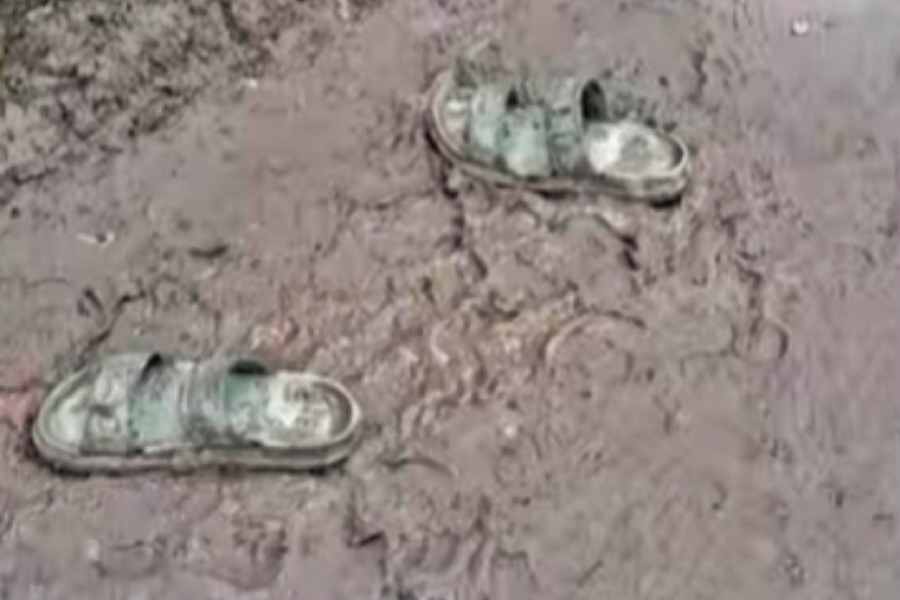 |
 |
| The ruins of a Dhanushkoti church which was destroyed by a cyclonic storm in 1964. (below) A poster in Rameshwaram urges people to protect “Ramar Sethu”. Pictures by M. Palanikumar |
Dhanushkoti (Tamil Nadu), Sept. 16: In this slender land’s end, faith runs strong.
Ram, local people swear, ground his dhanush (bow) in the sands after returning victorious from Lanka. And so the name Dhanushkoti.
It’s a tale they have grown up on like the other legend — of the exiled prince marching across the sea to rescue Sita from Ravan over a bridge built by Hanuman’s vanar sena (monkey army).
Yet, it’s not faith but environment concerns that take over when it comes to the question of whether to leave “Ramar Sethu” — or Adam’s Bridge — untouched or demolish it and go ahead with the Sethusamudram ship channel project.
“Let’s not get too much into the historicity of Ramar Sethu. If that area is demolished, it will destroy the coral reefs, leave us with no protective barrier from any future tsunami and pose a direct threat to the sacred Rameshwaram island,” says Manikanda Sharma, a local priest.
“Half the people here don’t know whether Ramar Bridge exists or not,” says another resident, a trader, who did not want to be named.
The “bridge” — partly submerged islets of sand shoals that stretch across to the Lankan coast about 18km away — is a “matter of faith”, he says, “not the key issue”.
Sharma, a former trustee of the ancient Sri Ramanathaswamy temple in Rameshwaram, sums up the mood of the local people. Mostly poor fishermen, they say the Rs 2,427-crore project, dredging a channel across the sea to cut sailing time between India’s east and west coasts by nearly 30 hours, would “spell ruin” for their livelihood.
“Already, in the last 20 years, fish catch in this area has drastically come down, forcing us to stray into Sri Lankan waters,” says a fisherman.
“If the canal is dug, what little breeding that takes place in this area will also disappear.”
Sharma, more knowledgeable than the average folk in this swampy stretch, 14km from Rameshwaram Island, is worried about environmental violations.
“We are more worried that all guidelines, including those on dumping of dredged material, are being flouted,” he says.
He emphasises the threat from natural calamities.
 |
A church in ruins, a battered post office and remnants of a few buildings amid little sand dunes stand as grim reminder of the 1964 cyclone — or was it another tsunami? — that devastated Dhanushkoti, including its quaint rail link to Rameshwaram.
Eighty-year-old Neechal Kali, one of the few survivors of the 1964 cyclone, however thinks the ship channel would restore the glory of Dhanushkoti, now a deserted village, as big ships passing through this stretch will stimulate coastal shipping and development of small ports.
As for “Ramar Sethu”, he says, even if it had been built, it must have been “washed away by now”.











